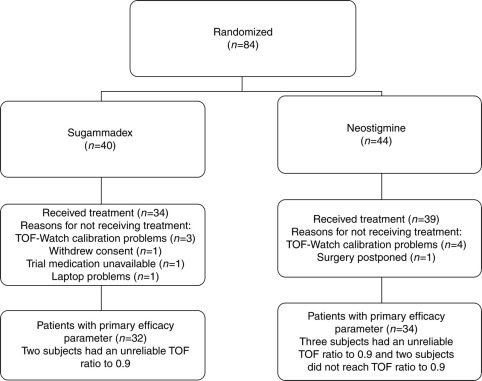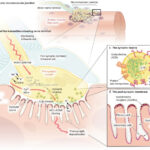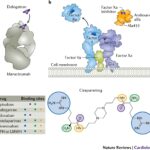Rocuronium is an aminosteroidal nondepolarizing neuromuscular blocking agent (NMBA) used widely in general anesthesia to provide muscle relaxation for tracheal intubation and surgical procedures. Its intermediate duration of action and rapid onset make it favorable compared to other NMBAs. However, due to its mechanism of competitive inhibition of acetylcholine receptors, residual neuromuscular blockade may persist postoperatively if not reversed properly, increasing the risk of respiratory complications.
Timely and effective reversal of rocuronium-induced neuromuscular blockade is thus essential to ensure patient safety and to expedite recovery after surgery.

Pharmacology of Rocuronium and the Need for Reversal
Rocuronium acts at nicotinic acetylcholine receptors in the neuromuscular junction, blocking neuromuscular transmission without depolarizing the membrane. It has a typical onset of 1–2 minutes and a clinical duration of 30–60 minutes, depending on the dose.
Reversal becomes necessary in the following clinical situations:
- Inadequate spontaneous recovery of muscle function
- Early emergence required due to unanticipated surgical changes
- Avoidance of postoperative residual neuromuscular blockade (RNMB)
Available Reversal Agents for Rocuronium Blockade
Sugammadex: The First-Line Reversal Agent
Sugammadex is a selective relaxant binding agent (SRBA) designed specifically for the reversal of aminosteroidal NMBAs such as rocuronium and vecuronium. It forms a tight complex with rocuronium molecules in plasma, rendering them inactive and facilitating renal elimination.
Key Features
- Rapid and complete reversal even from profound blockade
- Avoids the need for anticholinergics
- More predictable and safer than traditional agents
Dosing Protocol
| Clinical Condition | Sugammadex Dose |
|---|---|
| TOF count 2/4 | 2 mg/kg IV |
| Post-tetanic count 1–2 | 4 mg/kg IV |
| Immediate reversal (e.g., failed intubation after 1.2 mg/kg rocuronium) | 16 mg/kg IV |
Safety Considerations
- Contraindicated in severe renal impairment (CrCl <30 mL/min)
- May cause bradycardia, hypotension, or hypersensitivity reactions
- No need for co-administration with anticholinergic agents
Neostigmine: A Traditional Alternative
Neostigmine is an acetylcholinesterase inhibitor that increases acetylcholine availability at the neuromuscular junction, enabling it to outcompete rocuronium.
Usage Guidelines
- Suitable for moderate recovery only (TOF ≥2/4)
- Requires co-administration with glycopyrrolate or atropine to offset muscarinic effects
- Not effective for deep or profound blockade
Recommended Dosing
- Neostigmine: 0.04–0.07 mg/kg IV
- Glycopyrrolate: 0.01 mg/kg IV (or Atropine: 0.015 mg/kg)
Objective Neuromuscular Monitoring: Guiding Reversal Timing
The gold standard for assessing blockade depth and guiding reversal is quantitative Train-of-Four (TOF) monitoring. Clinical signs alone are unreliable.
| TOF Count | Interpretation | Suggested Reversal Agent |
|---|---|---|
| 0/4 | Deep blockade | Sugammadex 4 mg/kg |
| 1–2/4 | Moderate blockade | Sugammadex 2 mg/kg or Neostigmine |
| 4/4 with fade | Near recovery | Neostigmine or Sugammadex |
| TOF Ratio ≥0.9 | Full recovery | Safe for extubation |
Special Considerations in Rocuronium Reversal
Renal Impairment
- Sugammadex is not recommended in CrCl <30 mL/min due to reliance on renal excretion.
- Neostigmine can be used cautiously with appropriate monitoring.
Hepatic Dysfunction
- Rocuronium clearance may be prolonged; monitor for delayed recovery.
- Reversal timing may need adjustment.
Pediatric Patients
- Sugammadex is approved for children ≥2 years old
- Dosing remains weight-based and requires TOF-guided administration
Geriatric Patients
- Slower onset and recovery expected
- Monitor cardiac response to reversal agents
Adverse Effects and Precautions
| Agent | Common Side Effects | Precautions |
|---|---|---|
| Sugammadex | Bradycardia, hypotension, hypersensitivity | Avoid in severe renal dysfunction |
| Neostigmine | Bradycardia, secretions, GI upset | Use with anticholinergic to prevent side effects |
Best Practices for Clinical Implementation
- Always confirm TOF ratio ≥0.9 before extubation
- Avoid empirical reversal without monitoring
- Use quantitative TOF over tactile or visual assessments
- Educate anesthesia providers on agent selection, timing, and dosing
- Establish institutional protocols for NMBA reversal and documentation
Frequently Asked Questions:
How fast does sugammadex reverse rocuronium?
Typically within 2–3 minutes, depending on the depth of blockade and dose used.
Can sugammadex reverse pancuronium or atracurium?
No. It only reverses aminosteroidal agents like rocuronium and vecuronium.
What TOF ratio confirms safe recovery?
A ratio of ≥0.9 is required for extubation and to prevent RNMB.
Is neostigmine as effective as sugammadex?
Not in deep blockade. Neostigmine is slower, less predictable, and requires anticholinergic agents.
What if reversal is needed urgently after intubation?
Administer sugammadex 16 mg/kg IV for immediate reversal within 3 minutes of high-dose rocuronium.
Reversal of neuromuscular blockade induced by rocuronium is a critical step in safe anesthesia practice. The emergence of sugammadex has dramatically improved outcomes due to its rapid and complete reversal capabilities, especially when deep blockade is present. Nevertheless, neostigmine remains a valid alternative in specific scenarios with partial recovery. Accurate neuromuscular monitoring, patient-specific considerations, and adherence to dosing guidelines are fundamental to achieving optimal recovery and minimizing postoperative complications.

